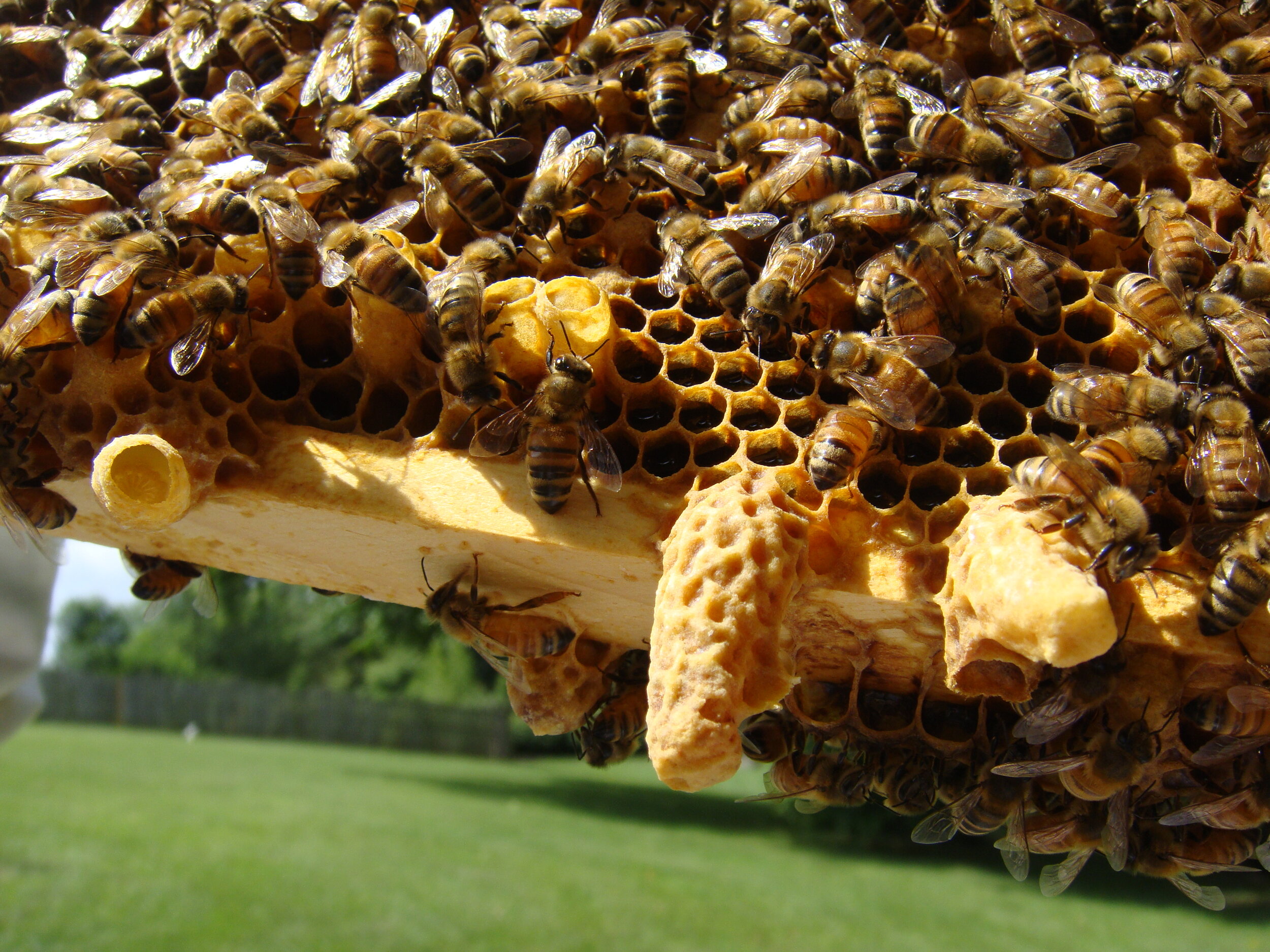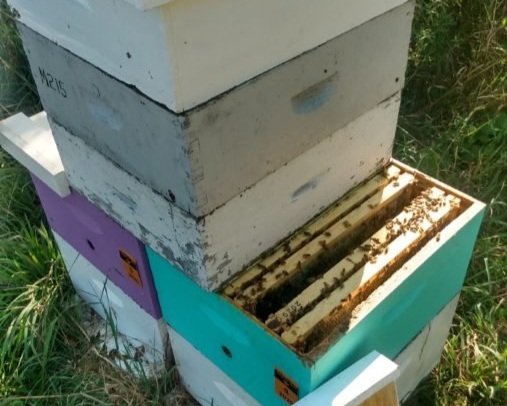Swarms and the Beekeeper
In Florida, we experience swarms throughout most of the year. Although it is a natural behavior, swarming divides the colony, reducing its potential production. Here’s a quick guide to dealing with them.

Important factors connected with the behavior of swarming:
-

Space
Populations and resources inside the hive can expand quickly. Provision plenty of space for rearing brood and storing nectar.
-

Pheromones
Queen substance stabilizes swarming. Young, well-mated queens have the highest levels of these pheromones.
-

Environment
Awareness of primary nectar flows is vital—bees will prepare to swarm prior to these times.

If there are occupied queen cells in the hive, it is safe to assume the bees have begun preparations to swarm.
Most swarm control techniques involve queen and brood manipulation. Generally, colonies should be rechecked every 7 to 10 days, and the control technique repeated if the desired outcome is not achieved.
Dequeening
Place the queen in a holding cage, and leave the colony queenless for 7 to 10 days.
During this time, but not longer, requeen the colony using the old queen after destroying all queen cells present.
Variations of this technique include the destruction of the original queen and introduction of a new queen, or the addition of a capped queen cell. Alternately, all queen cells may be cut out except one, and the existing queen may be used to start a new colony.
Splitting the Brood
Frames of brood removed from colonies requiring swarm control may be added to weaker colonies to equalize colony strength, if disease is not present. Kill all developing queen cells, first.
Alternately, all queen cells may be cut out except one. Move the intact queen cell and several frames to a nucleus colony.
Hive Rearrangement
Remove all but one sealed brood frame from the box containing the queen. Add a queen excluder, and one or two honey supers with drawn comb above it.
The remainder of the brood frames are placed on top of the same colony in another hive body.
In 7 to 10 days, all queen cells should be removed from frames in the top chamber.
Alternately, a queen may be hatched above and a second entrance provided. This results in a dual queen colony.






